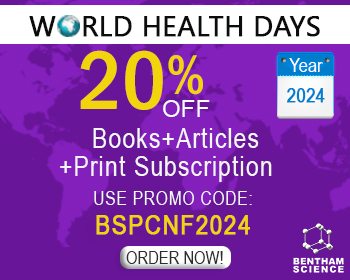Abstract
In the present review, associations between traditional vascular risk factors (VRFs) and carotid intimamedial thickness progression (C-IMTp) as well as the effects of therapies for VRFs control on C-IMTp were appraised to infer causality between each VRF and C-IMTp. Cohort studies indicate that smoking, binge drinking, fatness, diabetes, hypertension and hypercholesterolemia are associated with accelerated C-IMTp. An exception is physical activity, with mixed data. Interventions for the control of obesity, diabetes, hypertension and hypercholesterolemia decelerate C-IMTp. Conversely, scarce information is available regarding the effect of smoking cessation, stop of excessive alcohol intake and management of the metabolic syndrome. Altogether, these data support a causative role of several traditional VRFs on C-IMTp. Shortcomings in study design and/or ultrasonographic protocols may account for most negative studies, which underlines the importance of careful consideration of methodological aspects in investigations using C-IMTp as the outcome.
Keywords: Atherosclerosis, risk factors, carotid intima-medial thickness, atherosclerosis progression, ultrasonography, hypercholesterolemia.
[http://dx.doi.org/10.1016/0021-9150(90)90056-O] [PMID: 2407252]
[http://dx.doi.org/10.1161/01.ATV.19.4.1091] [PMID: 10195940]
[http://dx.doi.org/10.2337/diacare.23.9.1310] [PMID: 10977024]
[http://dx.doi.org/10.1161/01.STR.0000088643.07108.19] [PMID: 12947155]
[http://dx.doi.org/10.1111/ggi.12402] [PMID: 25312290]
[http://dx.doi.org/10.1016/j.atherosclerosis.2015.02.025] [PMID: 25724809]
[http://dx.doi.org/10.1016/j.atherosclerosis.2015.01.030] [PMID: 25746169]
[http://dx.doi.org/10.5551/jat.32177] [PMID: 26887219]
[PMID: 8443925]
[http://dx.doi.org/10.1001/jama.279.2.119] [PMID: 9440661]
[http://dx.doi.org/10.1253/circj.CJ-17-0644] [PMID: 29225295]
[http://dx.doi.org/10.1016/j.amjcard.2010.08.054] [PMID: 21146698]
[http://dx.doi.org/10.1161/01.ATV.0000072273.67342.6D] [PMID: 12702517]
[http://dx.doi.org/10.1016/j.atherosclerosis.2003.07.009] [PMID: 14642416]
[http://dx.doi.org/10.1161/01.STR.0000136720.21095.f3] [PMID: 15243147]
[http://dx.doi.org/10.1093/aje/155.1.38] [PMID: 11772783]
[http://dx.doi.org/10.1253/circj.CJ-11-1506] [PMID: 22971947]
[http://dx.doi.org/10.1161/01.STR.0000258003.31194.0a] [PMID: 17272779]
[http://dx.doi.org/10.1161/01.CIR.92.7.1758] [PMID: 7671358]
[http://dx.doi.org/10.2337/db10-0296] [PMID: 21270271]
[http://dx.doi.org/10.1161/01.CIR.0000033833.54884.34] [PMID: 12379574]
[http://dx.doi.org/10.2174/1570161043476366] [PMID: 15320518]
[http://dx.doi.org/10.1371/journal.pone.0035332] [PMID: 22496918]
[http://dx.doi.org/10.1161/01.ATV.19.12.3001] [PMID: 10591681]
[http://dx.doi.org/10.1016/j.atherosclerosis.2008.11.004] [PMID: 19108835]
[http://dx.doi.org/10.1017/S0007114509993369] [PMID: 20092665]
[http://dx.doi.org/10.1093/ajcn/85.6.1495] [PMID: 17556684]
[http://dx.doi.org/10.1093/ajcn/78.6.1085] [PMID: 14668268]
[http://dx.doi.org/10.1161/01.CIR.103.24.2922] [PMID: 11413081]
[http://dx.doi.org/10.1161/01.ATV.0000109955.80818.8a] [PMID: 14656738]
[http://dx.doi.org/10.1371/journal.pone.0064107] [PMID: 23700460]
[http://dx.doi.org/10.1007/s00394-018-1712-3] [PMID: 29761317]
[http://dx.doi.org/10.1016/j.numecd.2008.01.006] [PMID: 18472409]
[http://dx.doi.org/10.1016/j.atherosclerosis.2011.06.050] [PMID: 21802081]
[http://dx.doi.org/10.1161/ATVBAHA.113.302327] [PMID: 24285581]
[http://dx.doi.org/10.3945/ajcn.115.112151] [PMID: 26354542]
[http://dx.doi.org/10.1016/j.atherosclerosis.2006.03.005] [PMID: 16616147]
[http://dx.doi.org/10.5551/jat.22921] [PMID: 24727682]
[http://dx.doi.org/10.1161/STROKEAHA.111.620831] [PMID: 21903957]
[http://dx.doi.org/10.1161/01.CIR.94.10.2369] [PMID: 8921775]
[http://dx.doi.org/10.1097/00149831-200606000-00008] [PMID: 16926662]
[http://dx.doi.org/10.1161/01.CIR.0000029092.99946.08] [PMID: 12234947]
[http://dx.doi.org/10.1161/01.CIR.103.7.919] [PMID: 11181464]
[http://dx.doi.org/10.1046/j.1365-2796.2000.00752.x] [PMID: 11123502]
[http://dx.doi.org/10.1161/01.CIR.0000050626.25057.51] [PMID: 12600905]
[http://dx.doi.org/10.1016/S0002-9343(03)00242-0] [PMID: 12867230]
[http://dx.doi.org/10.5271/sjweh.1171] [PMID: 18327509]
[http://dx.doi.org/10.1093/eurheartj/ehq092] [PMID: 20400760]
[http://dx.doi.org/10.1186/s12933-019-0840-2] [PMID: 30885194]
[http://dx.doi.org/10.1007/s00431-018-3101-6] [PMID: 29374832]
[http://dx.doi.org/10.1016/j.jacc.2004.03.078] [PMID: 15358024]
[http://dx.doi.org/10.1016/j.atherosclerosis.2003.12.025] [PMID: 15064110]
[http://dx.doi.org/10.1016/j.jacl.2014.02.007] [PMID: 24793347]
[http://dx.doi.org/10.1111/j.1365-2265.2012.04504.x] [PMID: 22809141]
[http://dx.doi.org/10.1038/oby.2011.80] [PMID: 21494228]
[http://dx.doi.org/10.1016/j.atherosclerosis.2004.08.033] [PMID: 15694949]
[http://dx.doi.org/10.1038/oby.2002.136] [PMID: 12376580]
[http://dx.doi.org/10.1038/sj.ijo.0802468] [PMID: 14634688]
[http://dx.doi.org/10.1161/CIRCULATIONAHA.108.845065] [PMID: 19581494]
[http://dx.doi.org/10.1016/S0021-9150(00)00514-1] [PMID: 11166785]
[http://dx.doi.org/10.1038/oby.2010.313] [PMID: 21183931]
[http://dx.doi.org/10.1161/01.CIR.0000126599.47470.BE] [PMID: 15066949]
[http://dx.doi.org/10.1016/j.numecd.2012.08.003] [PMID: 23018041]
[http://dx.doi.org/10.1038/sj.ijo.0801024] [PMID: 10490801]
[http://dx.doi.org/10.1016/j.soard.2017.01.040] [PMID: 28411021]
[http://dx.doi.org/10.1007/s11695-017-2962-5] [PMID: 29043547]
[http://dx.doi.org/10.1136/hrt.2011.223446] [PMID: 21610270]
[http://dx.doi.org/10.1016/j.diabres.2009.09.013] [PMID: 19818522]
[http://dx.doi.org/10.1111/j.1365-2796.2005.01511.x] [PMID: 15953130]
[http://dx.doi.org/10.5551/jat.18655] [PMID: 24477027]
[http://dx.doi.org/10.1161/HYPERTENSIONAHA.112.194738] [PMID: 22733470]
[http://dx.doi.org/10.1186/1475-2840-11-77] [PMID: 22738646]
[http://dx.doi.org/10.1097/HJH.0b013e3282f063d5] [PMID: 17984668]
[http://dx.doi.org/10.5551/jat.13.46] [PMID: 16505591]
[http://dx.doi.org/10.1161/CIRCULATIONAHA.109.894584] [PMID: 20065161]
[http://dx.doi.org/10.1161/ATVBAHA.107.149641] [PMID: 17656672]
[http://dx.doi.org/10.1161/01.STR.0000199034.26345.bc] [PMID: 16373634]
[http://dx.doi.org/10.1186/s12933-015-0293-1] [PMID: 26427534]
[http://dx.doi.org/10.1186/1475-2840-11-51] [PMID: 22583598]
[http://dx.doi.org/10.1097/HJR.0b013e3283319094] [PMID: 19940777]
[http://dx.doi.org/10.1016/j.jdiacomp.2005.11.004] [PMID: 17189868]
[http://dx.doi.org/10.1016/j.atherosclerosis.2012.09.005] [PMID: 23040867]
[http://dx.doi.org/10.1016/j.jdiacomp.2011.04.001] [PMID: 21775166]
[http://dx.doi.org/10.1161/01.STR.0000125864.01546.f2] [PMID: 15073402]
[http://dx.doi.org/10.1016/j.diabres.2004.07.012] [PMID: 15713352]
[http://dx.doi.org/10.1161/ATVBAHA.107.152835] [PMID: 17872451]
[http://dx.doi.org/10.2337/dc15-0781] [PMID: 26628419]
[http://dx.doi.org/10.2337/dc15-2145] [PMID: 26822324]
[http://dx.doi.org/10.1007/s00125-004-1547-8] [PMID: 15565373]
[http://dx.doi.org/10.1161/01.CIR.0000134501.57864.66] [PMID: 15197140]
[http://dx.doi.org/10.2337/dc05-2462] [PMID: 16801577]
[http://dx.doi.org/10.1111/j.1365-2796.2007.01767.x] [PMID: 17305652]
[http://dx.doi.org/10.1111/j.1464-5491.2010.03089.x] [PMID: 21059092]
[http://dx.doi.org/10.1016/j.jacc.2008.12.072] [PMID: 19477351]
[http://dx.doi.org/10.1161/ATVBAHA.112.300346] [PMID: 23175674]
[http://dx.doi.org/10.1001/jama.296.21.joc60158] [PMID: 17101640]
[http://dx.doi.org/10.5551/jat.4663] [PMID: 20686324]
[http://dx.doi.org/10.1210/jc.2004-1685] [PMID: 15623809]
[http://dx.doi.org/10.1016/j.atherosclerosis.2007.10.016] [PMID: 18054942]
[http://dx.doi.org/10.2337/dc12-2129] [PMID: 23564916]
[http://dx.doi.org/10.1056/NEJMoa022314] [PMID: 12788993]
[http://dx.doi.org/10.1038/ki.2009.557] [PMID: 20130527]
[http://dx.doi.org/10.1016/j.amjcard.2006.10.061] [PMID: 17398191]
[http://dx.doi.org/10.1016/S0021-9150(99)00272-5] [PMID: 10657561]
[http://dx.doi.org/10.1161/CIRCULATIONAHA.108.772665] [PMID: 19029469]
[http://dx.doi.org/10.1161/01.STR.30.3.550] [PMID: 10066851]
[http://dx.doi.org/10.1161/01.HYP.34.1.51] [PMID: 10406823]
[http://dx.doi.org/10.1097/00004872-200104000-00007] [PMID: 11330873]
[http://dx.doi.org/10.1097/HJH.0b013e328345d950] [PMID: 21505359]
[http://dx.doi.org/10.1161/STROKEAHA.114.005669] [PMID: 25213342]
[http://dx.doi.org/10.1093/ajh/hpy007] [PMID: 29566163]
[http://dx.doi.org/10.1097/00004872-199816110-00014] [PMID: 9856368]
[http://dx.doi.org/10.1161/01.CIR.0000039288.86470.DD] [PMID: 12417537]
[http://dx.doi.org/10.1097/00004872-200406000-00022] [PMID: 15167456]
[http://dx.doi.org/10.1177/1753944707085982] [PMID: 19124398]
[http://dx.doi.org/10.5551/jat.42101] [PMID: 29225324]
[http://dx.doi.org/10.1042/cs1010455] [PMID: 11672450]
[http://dx.doi.org/10.1161/01.STR.32.7.1539] [PMID: 11441198]
[http://dx.doi.org/10.1161/01.CIR.103.24.2949] [PMID: 11413085]
[PMID: 12572707]
[http://dx.doi.org/10.1016/S0735-1097(00)00736-1] [PMID: 10933355]
[http://dx.doi.org/10.1161/01.STR.0000155731.92786.e9] [PMID: 15692120]
[http://dx.doi.org/10.1001/jama.299.14.1678] [PMID: 18398080]
[http://dx.doi.org/10.1161/STROKEAHA.111.646596] [PMID: 22550052]
[http://dx.doi.org/10.1161/01.STR.0000140629.65145.3c] [PMID: 15345795]
[http://dx.doi.org/10.1291/hypres.26.465] [PMID: 12862203]
[http://dx.doi.org/10.1136/bmj.302.6779.756] [PMID: 2021765]
[http://dx.doi.org/10.1210/jc.2003-030329] [PMID: 14557456]
[http://dx.doi.org/10.1038/nutd.2015.26] [PMID: 26302064]
[http://dx.doi.org/10.1016/j.jacl.2011.02.003] [PMID: 21600518]
[http://dx.doi.org/10.1016/j.atherosclerosis.2007.03.045] [PMID: 17482196]
[http://dx.doi.org/10.1253/circj.CJ-10-0432] [PMID: 20689217]
[http://dx.doi.org/10.2147/VHRM.S27963] [PMID: 22272073]
[http://dx.doi.org/10.1016/j.atherosclerosis.2008.11.025] [PMID: 19124125]
[http://dx.doi.org/10.1007/s00508-010-1318-0] [PMID: 20361379]
[http://dx.doi.org/10.1136/heart.89.8.893] [PMID: 12860867]
[http://dx.doi.org/10.1161/ATVBAHA.112.300767] [PMID: 23393396]
[http://dx.doi.org/10.1161/01.CIR.90.4.1679] [PMID: 7734010]
[http://dx.doi.org/10.1016/S0002-9149(99)80470-6] [PMID: 7572686]
[http://dx.doi.org/10.7326/0003-4819-124-6-199603150-00002] [PMID: 8597317]
[http://dx.doi.org/10.1161/01.CIR.100.3.e14] [PMID: 10411862]
[http://dx.doi.org/10.1016/S0002-9149(99)80580-3] [PMID: 7863988]
[http://dx.doi.org/10.1016/S0002-9149(99)80468-8] [PMID: 7572684]
[http://dx.doi.org/10.1016/S0002-9343(96)00333-6] [PMID: 9003110]
[http://dx.doi.org/10.1111/j.1365-2796.2009.02073.x] [PMID: 19298496]
[http://dx.doi.org/10.1097/HJR.0b013e3283359c38] [PMID: 20038840]
[http://dx.doi.org/10.1001/jama.297.12.1344] [PMID: 17384434]
[http://dx.doi.org/10.1161/01.CIR.0000034508.55617.65] [PMID: 12379573]
[http://dx.doi.org/10.5551/jat.29520] [PMID: 26084792]
[http://dx.doi.org/10.2337/diacare.27.12.2887] [PMID: 15562202]
[http://dx.doi.org/10.1161/01.CIR.97.18.1784] [PMID: 9603532]
[http://dx.doi.org/10.1016/S0735-1097(98)00170-3] [PMID: 9626835]
[http://dx.doi.org/10.1161/01.CIR.103.13.1721] [PMID: 11282901]
[http://dx.doi.org/10.1177/2047487312451539] [PMID: 22689416]
[http://dx.doi.org/10.1016/S0021-9150(99)00434-7] [PMID: 10924737]
[http://dx.doi.org/10.1161/01.CIR.88.1.20] [PMID: 8319334]
[http://dx.doi.org/10.1161/01.STR.24.12.1779] [PMID: 8248954]
[http://dx.doi.org/10.1016/j.jacc.2008.10.031] [PMID: 19095139]
[http://dx.doi.org/10.1056/NEJMoa0907569] [PMID: 19915217]
[http://dx.doi.org/10.1016/j.jacc.2010.03.017] [PMID: 20399059]
[http://dx.doi.org/10.1093/eurheartj/ehs105] [PMID: 22564353]
[http://dx.doi.org/10.1001/archinte.163.15.1837] [PMID: 12912721]
[http://dx.doi.org/10.1016/S0140-6736(00)04053-8] [PMID: 11558482]
[http://dx.doi.org/10.1016/j.amjcard.2004.09.015] [PMID: 15642565]
[http://dx.doi.org/10.5551/jat.14860] [PMID: 23197250]
[http://dx.doi.org/10.1056/NEJMoa0800742] [PMID: 18376000]
[http://dx.doi.org/10.1001/jama.292.3.331] [PMID: 15265847]
[http://dx.doi.org/10.1056/NEJMoa071359] [PMID: 17387131]
[http://dx.doi.org/10.1016/S0140-6736(07)61088-5] [PMID: 17630038]
[http://dx.doi.org/10.1056/NEJMoa1206797] [PMID: 23126252]
[http://dx.doi.org/10.1007/s11883-011-0219-7] [PMID: 22102062]
[http://dx.doi.org/10.1056/NEJMoa0706628] [PMID: 17984165]
[http://dx.doi.org/10.1016/j.jacc.2010.05.059] [PMID: 21126642]
[http://dx.doi.org/10.1016/j.ahj.2010.06.029] [PMID: 20934565]
[PMID: 22895014]
[http://dx.doi.org/10.1016/S0140-6736(12)60441-3] [PMID: 22541275]
[http://dx.doi.org/10.2337/dc14-2732] [PMID: 26180107]
[http://dx.doi.org/10.1371/journal.pone.0191172] [PMID: 29649236]
[http://dx.doi.org/10.1161/ATVBAHA.113.301844] [PMID: 23825364]
[http://dx.doi.org/10.1177/003591576505800503] [PMID: 14283879]
[http://dx.doi.org/10.1186/1742-7622-2-11] [PMID: 16269083]


























